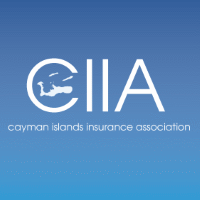We are hearing numerous reports of people getting infected by the bacteria causing necrotising fasciitis (known as the flesh-eating disease) in the warm coastal waters of the US. Grateful if you could tell us what the DoE, DEH and government health officials are doing to regularly check the bacteria counts in our much-used coastal waters.

Auntie’s answer: After checking with the Department of the Environment, the Department of Environmental Health, the Public Health Department and, for good measure, Water Authority-Cayman, I feel confident in reporting that this awful disease does not pose a threat to Cayman. In fact, there has never been a case reported locally of necrotising fasciitis.
Before I get into the specifics of why there is no real concern of the disease striking here, I want to acknowledge the help of all of the above entities. Each one not only responded with very useful information but did so promptly. In addition, and more importantly I think, the departments contacted each other to ensure they were offering a comprehensive answer. Everyone was helpful and willing to help, so I wanted to note their efforts publicly. (I know some people will say that’s their job, but in this case, with all the emails back and forth between everyone and the speed of corresponding, I believe they went beyond what would be expected.)
Now for the details, which I have collated from the various sources. While DEH, DoE and the Water Authority conduct tests for various bacteria in recreational and drinking water, they do not check for the type that could cause necrotising fasciitis. In addition to the disease being rare, Cayman’s marine environment is not “friendly” to the bacteria that causes it.
“The apparently growing issue with necrotising fasciitis along the Gulf Coast and other southern coastal states in the USA is likely linked to increased temperatures associated with climate change and the presence of contaminated coastal waters,” the DoE explained.
The DEH and DoE agree that after assessing the risk – or in this case, the lack thereof – they would not prioritise testing for the related bacteria, with the DoE saying, “These bacteria prefer brackish environments and are also associated with the rearing and production of seafood. Thankfully we do not have large, shallow estuarine areas and we are very fortunate to have limited land-based sources of pollution in comparison to many other countries in the region.”
As examples, Cayman does not have effluent streams from large fresh/brackish water aquaculture industries or polluted rivers emptying into coastal waters. We also do not have sewage outfalls or the direct discharge of treated sewage into our surrounding water.
Even so, the DoE stressed, “We will be keeping a watchful eye on this issue, together with our colleagues at the DEH and the Public Health Department.”
Send questions to auntie@caymannewsservice.com
or leave your question in the comment section of any article




Actually there was a case of Necrotising Fasciitis on the island a few years ago. It was caused by a minor car accident in which bacteria were pushed into flesh that had a low oxygen supply. The (not uncommon) bacteria then went into an anaerobic mode that produced a toxin similar to snake toxin that rapidly liquefies the flesh.
The surgeons’ options were; immediate evacuation, amputation of the leg or hyperbaric treatment. Since there is a hyperbaric chamber at the hospital, the patient was treated there, the necrotising behavior stopped, and the patient returned for more treatments for wound healing. The patient completely recovered. Both the curtailing of the toxin formation and the subsequent wound healing are due to the high level of oxygen in the patient’s bloodstream during treatment.
No the authorities here are not concerned, until it eats someone. Then again we have pythiosis which is just as bad.
I wouldn’t swim with the three headed prop-props in the North Sound close to the damn dump!
“These bacteria prefer brackish environments and are also associated with the rearing and production of seafood. Thankfully we do not have large, shallow estuarine areas and we are very fortunate to have limited land-based sources of pollution in comparison to many other countries in the region.”
Hmm, what is North Sound? Yes there is no river per say but the rain water still flows through the mangroves (what’s left) into it.
If they can control it, it might be beneficial. Judging by the large number of overweight inhabitants we have (including politicians), a dose of flesh eating bacteria might well help.
If “levels of faecal bacteria in the waters surrounding the east end of Grand Cayman were found to be nearly 50 times greater than accepted safety standards” don’t constitutes contaminated coastal waters, what would it take to declare it contaminated?
DEH, DoE and the Public Health Department response is an insult to people’s intelligence at best, and at worst it is admittance of incompetence.
How many of septic tanks are too old and too close to groundwater? How many were never designed to remove nitrogen? Nitrogen and other contaminants flowing into septic systems seep out through porous limestone and into groundwater aquifers, polluting waterways.
How about storm water runoff from streets, sludge disposal, and fertilized lawns?
Commercial fishing boats dumping fish remains and raw sewage into canals?
..forgot : ” On Marina Drive” …>
Excellent comment. Careful, you’re getting too close to a nerve here. I’ll add some salt to that wound.
All freshwater lenses in Cayman are impacted by sewage. Poor monitoring and lack of infrastructure saw to that. Lenses in North West Point, George Town and Bodden Town are for the most part unusable for drinking water purposes without intensive water treatment. North Side and East End lenses are still ok in places but increasing encroachment of residential developments without mains sewer infrastructure will soon kill them off too.
Wait, before I sigh in relief, please tell me how is the Turtle Farm waste water treated before it is released into the North West Point waters? How is the Dump prevented from leaching into the Sound? How is it our shallow waters (Seven Mile Beach and the North Sound ) have escaped the global trend of rising water temperatures ? … Not too sure I am comforted by the responses, particularly as they are not testing for this nasty Bacteria.
How they “will be keeping a watchful eye” if they don’t test for it? Isn’t it time to bring testing to 21st century? Deadly bacteria are spreading through the oceans as waters warm up, and are increasing infection risks including not only flesh eating bacteria, but also cholera.
* Laboratory manager Antoinette Johnson said [to Compass in April] the department does not have an established policy on issuing public warnings or closing beaches.
* The department lacks adequate personnel to make sure testing of Cayman’s beach waters takes place on a regular basis, she said. When samples are taken, old lab equipment sometimes keeps lab personnel from getting accurate readings.
* The lab, she said, is not meeting the recommendations established by the World Health Organization for frequency of testing.
Instead of purchasing Ebola tent, DOE lab could’ve been upgraded and personnel trained to test for new ( and the old ones) bacterias and viruses that are emerging and re-emerging because of the global warming.
How they “will be keeping a watchful eye” if they don’t test for it? Isn’t it time to bring testing to 21st century? Deadly bacteria are spreading through the oceans as waters warm up, and are increasing infection risks including not only flesh eating bacteria, but also cholera.
* Laboratory manager Antoinette Johnson said [to Compass in April] the department does not have an established policy on issuing public warnings or closing beaches.
* The department lacks adequate personnel to make sure testing of Cayman’s beach waters takes place on a regular basis, she said. When samples are taken, old lab equipment sometimes keeps lab personnel from getting accurate readings.
* The lab, she said, is not meeting the recommendations established by the World Health Organization for frequency of testing.
Instead of purchasing Ebola tent, DOE lab could’ve been upgraded and personnel trained to test for new ( and the old ones) bacterias and viruses that are emerging and re-emerging because of the global warming.
If you read the article you would see why there is no need to test for it. Our marine environment, lack of streams and water pollution eliminate most of the risk. It would be a waste of resources to chase a monster that isn’t there.
So they would not prioritise testing for the related bacteria?
How about:
Warming oceans all over the world present new risks.
Cooling water from CUC generators is discharged into North Sound.
Millions of sunscreen-laden tourists visit Stingray City in North Sound.
Pleasure boats discharging gasoline and petroleum products frequent North Sound.
Fertilizer runoff from the yards of canal homes discharge into North Sound.
Dump’s leachate poisons North Sound.
Insecticides from mosquitoes control runoffs poison beach waters.
Cruise ships discarding trash, fuel, and sewage directly into the ocean.
Only about 20 per cent of the wastewater generated in the Cayman Islands is collected and treated at the central wastewater treatment plant
Only a small percentage of homes are connected to the local sewer system. Every day, human waste seeps from thousands of septic tanks toward beach waters.
*sampling done by the Water Authority at 186 package private plants throughout Grand Cayman between April 2008 and February 2009 revealed that 126 did not meet the legal requirements.
*In June 2009 it was revealed the 18 worst waste management systems in private estates and retail sites in Cayman, including one site that was almost 275 times over the legal limit of total suspended solids.
*The Water Authority report, released in August of 2009 found that overall, only thirteen percent of the systems it sampled met the limits for both Biological Oxygen Demand and Total Suspended Solids.
Still insist that you have limited land-based sources of pollution?
Ebola risk didn’t exist for the Cayman Islands, yet, they spent half a million to purchase ebola tent.
Only a newcomer could state there’s lack of water pollution. “In October, levels of faecal bacteria in the waters surrounding the east end of Grand Cayman were found to be nearly 50 times greater than accepted safety standards.”
Rough seas and rainfalls result in runoffs and overflow from septic tanks near beaches, elevate levels of the bacteria. Unless rainfalls and rough seas are eliminated and faulty septic tanks fixed, water pollution would always exist in the CI. Don’t forget about the Dump’s leachate.
But, we have had a mariculture operation for decades called the Turtle Farm and with disease afflicted specimens.
Thanks for this helpful and detailed answer to a good question. Keep up the good work, Auntie!
There may have never been a recorded case in Cayman, but I wouldn’t swim where the turtle farm pumps millions of gallons of raw shit into the sea.
only a concern in east end…lots of strange ones over there.
There is much hysteria about necrotising fascitis in the US media. Most cases of necrotising fasciitis are caused by Staphylococcus aureus, Streptococcus pyogenes,enterococci), Escherichia coli, Pseudomonas aeruginosa), and anaerobes, (Bacteroides and Clostridium species. These are common organism found everywhere and usually have nothing to do with swimming. Vibrio infections which are found in saltwater are very rare. The reason we do not see it in Cayman because it only it affects between 0.4 to 1 person per 100,000 people.